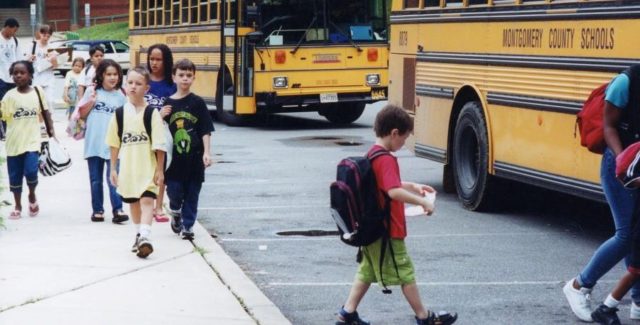With more schooling options available, millions of parents are choosing non-traditional education options for their children.
 Parents are fed up. As mass schooling becomes more restrictive, more standardized and more far-reaching into a child’s young life, many parents are choosing alternatives. Increasingly, these parents are reclaiming their child’s education and are refocusing learning around children, family, and community in several different ways.
Parents are fed up. As mass schooling becomes more restrictive, more standardized and more far-reaching into a child’s young life, many parents are choosing alternatives. Increasingly, these parents are reclaiming their child’s education and are refocusing learning around children, family, and community in several different ways.
With back-to-school time upon us, more than two million U.S. children will be avoiding the school bus altogether in favor of homeschooling, an educational choice that has accelerated in recent years among both liberal and conservative families. While homeschooling for religious freedom remains an important driver for many families, 2012 data from the National Center for Education Statistics (NCES) reveal that a main reason for homeschooling is “concern about the environment of other schools.”
Beyond homeschooling, an additional two million children will be educated this fall in charter schools. According to recent U.S. Department of Education data, the number of students currently enrolled in charter schools increased from 0.9 million in 2004 to 2.7 million in 2014, while the number of children enrolled in traditional public schools declined by 0.4 million during that same period. Taxpayer-funded but administered by predominantly private educational organizations, charter schools allow parents flexibility in choosing a school that is better aligned with their expectations and their child’s needs. Charter schools are often exempt from district policies and collective bargaining agreements that can halt innovation and experimentation, allowing them more instructional and organizational freedom. Demand for charter schools often outweighs current supply, with statewide charter caps, admissions lotteries, and long waiting lists leaving many parents discouraged and angry.
As online learning technology improves and expands, more parents are choosing virtual schools for their children over traditional public schools. Data from the non-profit organization, International Association for K-12 Online Learning, find that 310,000 young people in grades kindergarten through 12th grade participated in fully online programming in 2013, up from 200,000 in 2010. In addition to homeschoolers, charter school students, and virtual learners, more than four million children will avoid a traditional district school this fall to attend a U.S. private school.
In states that advocate parental choice and actively expand education options to more families, student enrollment in traditional public schools is declining. When given real choices, parents are deciding to avoid an assigned district school in favor of alternatives.
In North Carolina, for example, the state has taken deliberate steps to expand education choice to more parents. These steps include lifting caps on the number of allowed charter schools, creating a voucher program for low-income families, offering tuition assistance for parents of children with special needs, and expanding opportunities for homeschoolers. As a result of these efforts, enrollment this year in the state’s traditional public schools declined by more than 5,000 students, while those enrolled in home-schools, charter schools, and private schools increased by almost 24,000 children.
Today, parents are glimpsing the possibilities of real education choice measures that put them back in charge of their children’s education. After decades of weakening parental empowerment, in which mass schooling has steadily consumed more of a child’s time than ever before, parents are reclaiming their essential role in guiding their children’s education.
They are also advocating for additional choice measures that make avoiding traditional public schools more feasible. With back-to-school time approaching, many families are opting-out of mass schooling and into a host of quality educational alternatives.
Written by Kerry McDonald and published by Intellectual Takeout ~ August 22, 2017.
 FAIR USE NOTICE: This site contains copyrighted material the use of which has not always been specifically authorized by the copyright owner. We are making such material available in our efforts to advance understanding of environmental, political, human rights, economic, democracy, scientific, and social justice issues, etc. We believe this constitutes a ‘fair use’ of any such copyrighted material as provided for in section 107 of the US Copyright Law. In accordance with Title 17 U. S. C. Section 107, the material on this site is distributed without profit to those who have expressed a prior interest in receiving the included information for research and educational purposes. For more information go to: http://www.law.cornell.edu/uscode/17/107.shtml
FAIR USE NOTICE: This site contains copyrighted material the use of which has not always been specifically authorized by the copyright owner. We are making such material available in our efforts to advance understanding of environmental, political, human rights, economic, democracy, scientific, and social justice issues, etc. We believe this constitutes a ‘fair use’ of any such copyrighted material as provided for in section 107 of the US Copyright Law. In accordance with Title 17 U. S. C. Section 107, the material on this site is distributed without profit to those who have expressed a prior interest in receiving the included information for research and educational purposes. For more information go to: http://www.law.cornell.edu/uscode/17/107.shtml
